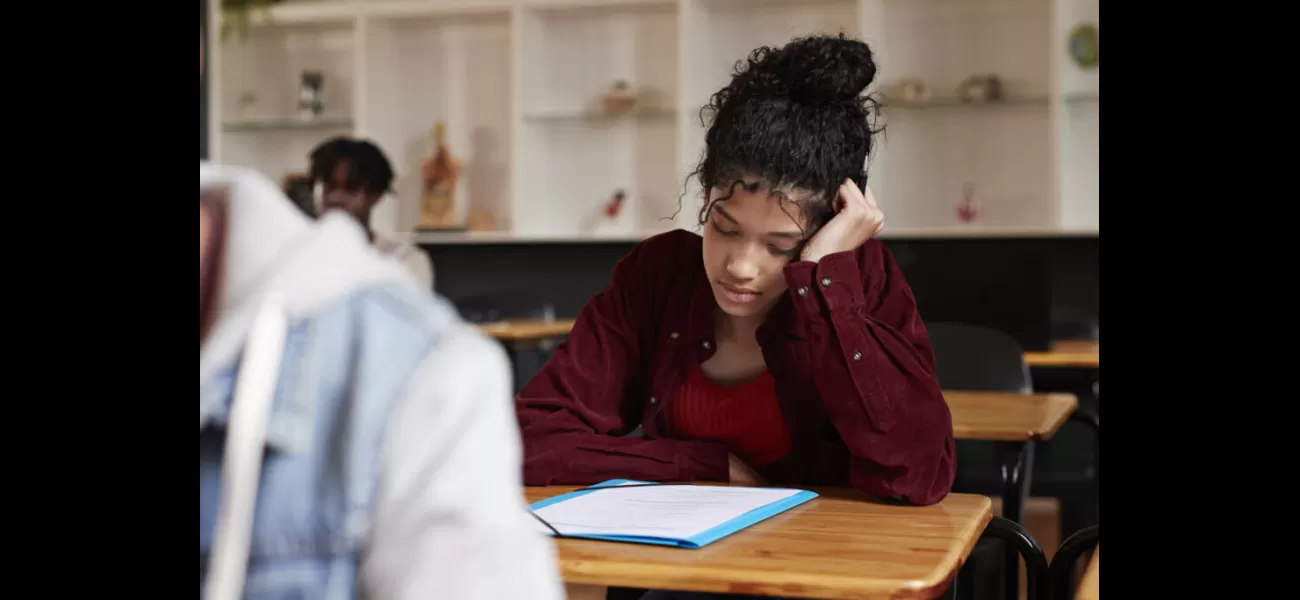Survey: After 7 decades of Brown v. Board, segregation continues to impact American schools.
ProPublica report found "school choice" promoted by conservative governors in the South is actually a push to resegregate schools.
May 19th 2024.

According to a recent Washington Post-Ipsos survey, the majority of Americans agree with the 1954 Supreme Court ruling that ended segregation in public schools. However, a closer look at our education system reveals that this ruling did not lead to true desegregation. As reported by BLACK ENTERPRISE, schools today are still largely segregated due to the practice of “educational redlining,” which has a direct impact on the distribution of funding among schools.
The Hill also reported that a 2022 study by the Education Trust found a significant funding gap between school districts with predominantly white students and those with predominantly non-white students. On average, schools with non-white students receive $2,000 less per student, which adds up to a staggering $13.5 million difference for a school district with 5,000 students. Jalisa Evans, CEO and founder of the Black Educator Advocates Network, spoke to the outlet about the ongoing effects of educational redlining. She stated, “Today, schools with large numbers of Black students are underfunded.”
An investigation by ProPublica revealed that the recent push for “school choice” by conservative governors is actually a means to resegregate schools, particularly in the South. Amberly Faye Sheffield, a graduate student at Auburn University, found that this was most evident in Wilcox County, Alabama. In her thesis, she writes about the resistance tactics adopted by white residents in the county following the federal enforcement of Brown v. Board of Education and the Civil Rights Act of 1964. These tactics included “freedom of choice,” district zoning, and the establishment of segregation academies, which allowed whites to continue segregating schools for decades after the landmark ruling.
Stefan Lallinger, a senior fellow at the Century Foundation, spoke to the Washington Post about the widespread support for the Brown v. Board of Education decision. However, he also pointed out that the true disagreement lies in how we can fix the deep-rooted segregation that still exists in our education system today. “The Brown decision represents our highest ideals as a nation. It’s who we strive to be,” said Lallinger. “But when it comes down to personal decisions about where to send their children to school, people’s ideals clash with the reality of our segregated schools.”
This sentiment is shared by both Black and white Americans, as revealed by a recent study. While 50% of Black Americans support neighborhood schools, even if it means segregation, a staggering 80% of white Americans are also in favor of resegregating schools. Ann Owens, a professor at the University of Southern California, conducted a study on racial segregation in America's 100 largest school districts, and her findings were alarming. She stated, “When we shifted from a commitment to integration to a focus on school choice, it's not surprising that we see a rise in school segregation. We have abandoned our responsibility for integration, and unrestricted choice does not automatically lead to diversity.”
Owens also emphasized the negative impact of the concentration of Black and Latinx students in high-poverty districts. She stated, “This contributes to the inequalities and disparities that we see in our society. It's not just about sitting next to a student of a different race; it's about the resources and opportunities that are linked to race.”
In conclusion, despite the widespread support for the Brown v. Board of Education ruling, our education system is still deeply segregated. The practice of “educational redlining” and the push for school choice have only exacerbated this issue, leading to a significant funding gap between predominantly white and non-white school districts. It's clear that we still have a long way to go in achieving true desegregation and providing equal opportunities for all students.
The Hill also reported that a 2022 study by the Education Trust found a significant funding gap between school districts with predominantly white students and those with predominantly non-white students. On average, schools with non-white students receive $2,000 less per student, which adds up to a staggering $13.5 million difference for a school district with 5,000 students. Jalisa Evans, CEO and founder of the Black Educator Advocates Network, spoke to the outlet about the ongoing effects of educational redlining. She stated, “Today, schools with large numbers of Black students are underfunded.”
An investigation by ProPublica revealed that the recent push for “school choice” by conservative governors is actually a means to resegregate schools, particularly in the South. Amberly Faye Sheffield, a graduate student at Auburn University, found that this was most evident in Wilcox County, Alabama. In her thesis, she writes about the resistance tactics adopted by white residents in the county following the federal enforcement of Brown v. Board of Education and the Civil Rights Act of 1964. These tactics included “freedom of choice,” district zoning, and the establishment of segregation academies, which allowed whites to continue segregating schools for decades after the landmark ruling.
Stefan Lallinger, a senior fellow at the Century Foundation, spoke to the Washington Post about the widespread support for the Brown v. Board of Education decision. However, he also pointed out that the true disagreement lies in how we can fix the deep-rooted segregation that still exists in our education system today. “The Brown decision represents our highest ideals as a nation. It’s who we strive to be,” said Lallinger. “But when it comes down to personal decisions about where to send their children to school, people’s ideals clash with the reality of our segregated schools.”
This sentiment is shared by both Black and white Americans, as revealed by a recent study. While 50% of Black Americans support neighborhood schools, even if it means segregation, a staggering 80% of white Americans are also in favor of resegregating schools. Ann Owens, a professor at the University of Southern California, conducted a study on racial segregation in America's 100 largest school districts, and her findings were alarming. She stated, “When we shifted from a commitment to integration to a focus on school choice, it's not surprising that we see a rise in school segregation. We have abandoned our responsibility for integration, and unrestricted choice does not automatically lead to diversity.”
Owens also emphasized the negative impact of the concentration of Black and Latinx students in high-poverty districts. She stated, “This contributes to the inequalities and disparities that we see in our society. It's not just about sitting next to a student of a different race; it's about the resources and opportunities that are linked to race.”
In conclusion, despite the widespread support for the Brown v. Board of Education ruling, our education system is still deeply segregated. The practice of “educational redlining” and the push for school choice have only exacerbated this issue, leading to a significant funding gap between predominantly white and non-white school districts. It's clear that we still have a long way to go in achieving true desegregation and providing equal opportunities for all students.
[This article has been trending online recently and has been generated with AI. Your feed is customized.]
[Generative AI is experimental.]
0
0
Submit Comment





